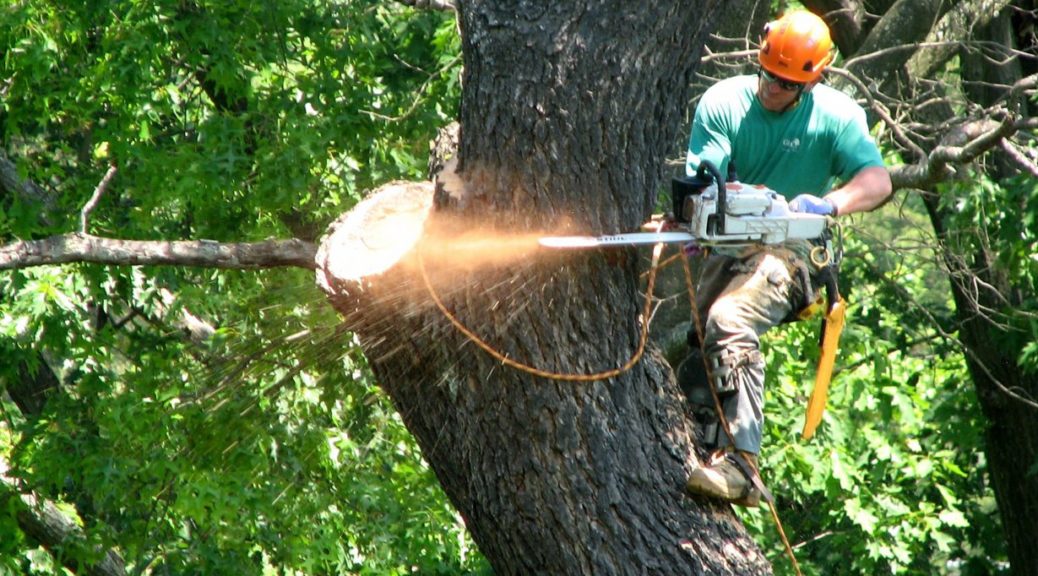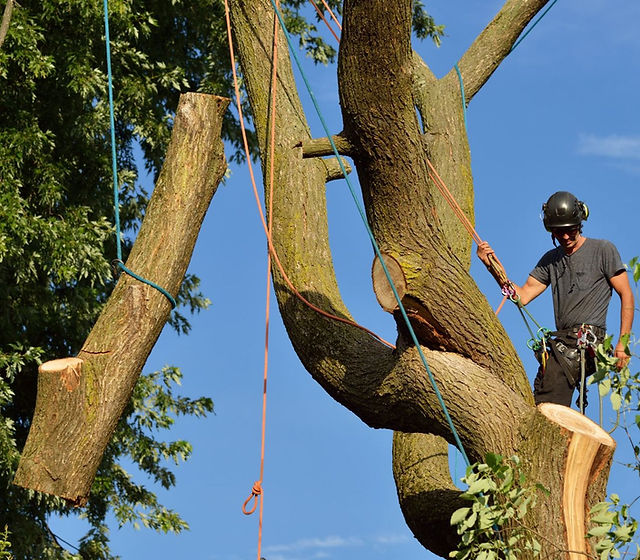Safe and Reliable Tree Removal for a Healthier Landscape
The process of effective and risk-free tree elimination is vital in fostering a healthier landscape, especially when resolving the risks linked with unhealthy or unpredictable trees. Property owners encounter a critical choice between choosing or utilizing professional services for a do-it-yourself method, each bring its own effects for safety and efficiency. Comprehending the nuances of this procedure, consisting of needed precautions and post-removal care, can considerably affect the long-lasting health of your outside setting. Yet, the inquiry remains: what factors should be taken into consideration to make sure both security and eco-friendly stability throughout this task?
Significance of Tree Removal
Tree elimination plays a vital role in preserving a healthy and balanced landscape, with studies suggesting that around 30% of trees in urban areas may be diseased or in danger of collapse. This statistic underscores the significance of proactive tree management, as unhealthy trees posture substantial threats to both home and public security. Unhealthy trees can draw in pests and diseases that threaten other plant life, interrupting the environmental balance within the landscape.
Furthermore, tree elimination can boost the aesthetic charm of an area. Getting rid of disordered or poorly placed trees permits better light infiltration and boosts the expanding conditions for surrounding plants. This technique supports the total health of the landscape, fostering a much more diverse and vibrant ecological community.
In addition, tree elimination is essential in metropolitan growth and framework preparation. As cities increase, the demand to clear space for construction or roads frequently requires the removal of trees that impede progress. When conducted responsibly, tree removal can assist in sustainable advancement while prioritizing security and ecological health.

Assessing Trees for Elimination
Assessing the problem of trees is a vital action in the elimination procedure, making sure that choices are based upon complete assessments as opposed to presumptions. To begin this assessment, an aesthetic inspection ought to be carried out, concentrating on indicators of disease, parasite invasions, and architectural weak points. Secret indications include dead branches, bark problems, and significant lean.
Following, it is vital to evaluate the tree's total health and vigor. This entails checking out fallen leave density, development, and pigmentation patterns. Trees displaying stunted growth or discolored foliage may show underlying issues that call for removal. Additionally, consider the tree's place about frameworks, other plants, and public security. Trees that posture risks because of their proximity to buildings or high-voltage line should be prioritized for assessment.
In addition, expert arborists can use advanced diagnostic tools, such as resistographs or sonic tomographs, to examine the inner stability of the tree. These tools aid identify decay or structural deficiencies that might not be visible externally. Eventually, a detailed assessment will lead educated choices concerning tree removal, ensuring that the landscape remains safe and healthy and balanced for all.
Safety Precautions and Devices
Safety is vital when undertaking tree removal, as the process includes inherent threats to both employees and building. Prior to starting any kind of tree removal operation, it is essential to perform a comprehensive risk analysis to identify possible dangers such as close-by frameworks, high-voltage line, and unpredictable ground conditions.

Appropriate individual protective devices (PPE) is vital; this includes construction hats, safety and security goggles, handwear covers, and steel-toed boots. Furthermore, hearing security ought to be worn when running loud equipment.
The right tools are vital for secure and effective tree elimination. Power saws are frequently used, but they require proper handling and maintenance. Constantly make sure that the power saw is geared up with a functioning chain brake which the operator is trained in its use. Various other vital tools include ropes for rigging, wedges for guiding falls, and a trimming saw for smaller sized branches.
Establishing a clear work zone, communicating properly with all staff member, and having a first-aid set easily available adds to a more secure elimination process. By adhering to these security precautions and utilizing proper devices, tree removal can look at this website be executed effectively while reducing risks.
Specialist vs. DIY Elimination
Commonly, property owners discover themselves weighing the advantages and disadvantages of expert tree elimination services versus trying the task themselves. While DIY elimination can be appealing as a result of cost savings, it postures considerable threats and challenges. Tree elimination calls for specialized knowledge regarding tree biology, architectural stability, and secure reducing techniques, which the ordinary property owner may do not have. Inappropriate techniques can cause injury, building damages, or perhaps damages to surrounding trees.
On the other hand, hiring a professional tree removal service ensures that the job is implemented securely and successfully. Toronto tree removal. Specialists are geared up with the right devices and possess the needed know-how to examine the circumstance accurately, reducing dangers. They can also manage disposal and clean-up, which can be a difficult job for individuals trying do it yourself elimination
Moreover, professional solutions commonly offer insurance coverage, securing property owners from prospective obligations in case of accidents. While the first expense might be higher, the lasting advantages of professional solutions-- such as safety, performance, and comfort-- can exceed the temporary savings of a do it yourself approach. Ultimately, the decision must consider aspects like the dimension and area of the tree, the homeowner's experience, and visite site the possible threats involved.
Post-Removal Landscape Care
As soon as a tree has actually been successfully removed, attention needs to turn to the landscape's like guarantee it stays visually enticing and healthy and balanced. As soon as stood, the very first step entails attending to the area where the tree. This consists of eroding the stump if not already finished, as this protects against prospective parasite problems and permits for new development.
Subsequently, it is critical to load the space left by the tree. Use top quality topsoil to level the ground, advertising correct water drainage and protecting against erosion. Depending upon the landscape layout, consider growing new trees or shrubs in the location to maintain balance and looks.
Watering and feeding the surrounding dirt will motivate helpful microbial activity, making certain a productive atmosphere for brand-new plantings. Display the area for any indications of disease or parasite activity, as the removal of a tree can interfere with local communities.
Last but not least, consider mulching the area to suppress weeds and preserve moisture. Normal upkeep, consisting of weeding and routine evaluations, will certainly aid maintain the landscape's health and elegance. By investing time in post-removal care, you can make sure a flourishing, lasting setting that improves your overall landscape.
Conclusion
In verdict, secure and effective tree removal plays an essential role in preserving a healthier landscape. Ultimately, effective tree removal not only reduces risks yet also promotes a thriving setting that benefits both human and wild animals populaces.
The process of risk-free and effective tree elimination is crucial in fostering a healthier landscape, specifically when addressing the risks associated with diseased or unsteady trees.Tree elimination plays an important duty in preserving a healthy landscape, with researches indicating that roughly 30% of trees in urban locations may be unhealthy or at danger of collapse. Ultimately, a detailed analysis will certainly guide enlightened decisions pertaining to tree removal, ensuring that the landscape continues to be healthy and secure for all.
